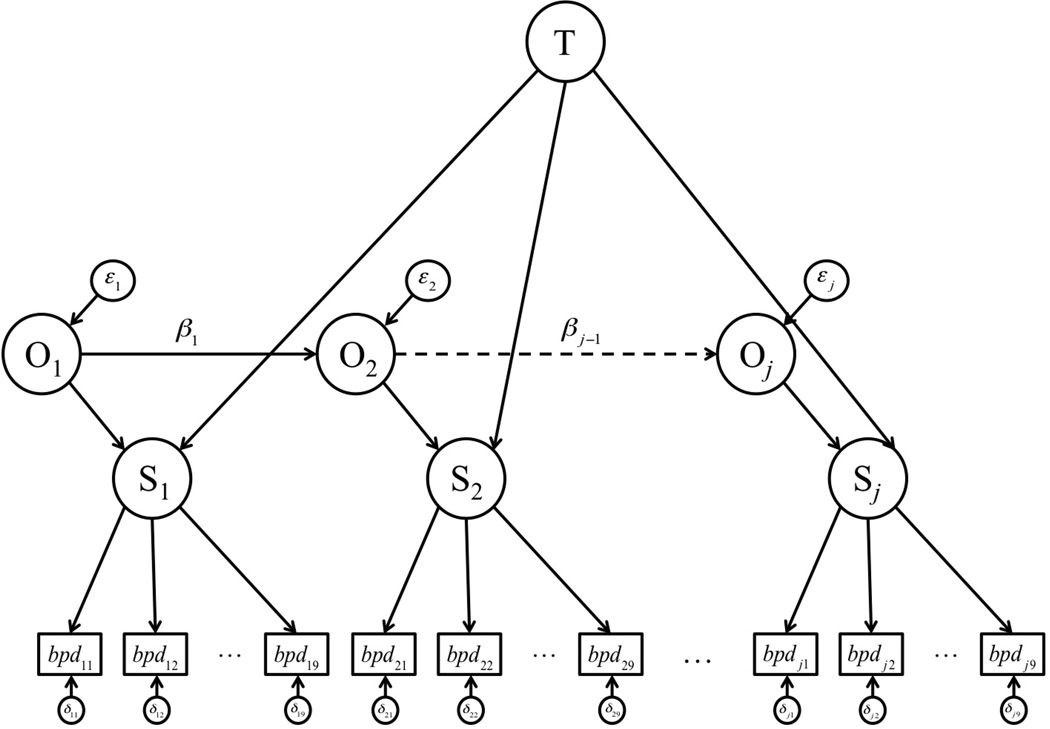Figure 1.
Trait-state-occasion model for borderline personality disorder. T = trait, O = occasion, and S = state for j waves. β= autoregressive parameter; ε = occasion factor disturbance; δ = manifest variable residual. The manifest variable subscripts represent wave (first subscript) and item (second subscript) numbers. For clarity of presentation, error covariances are not shown.

